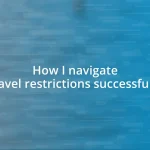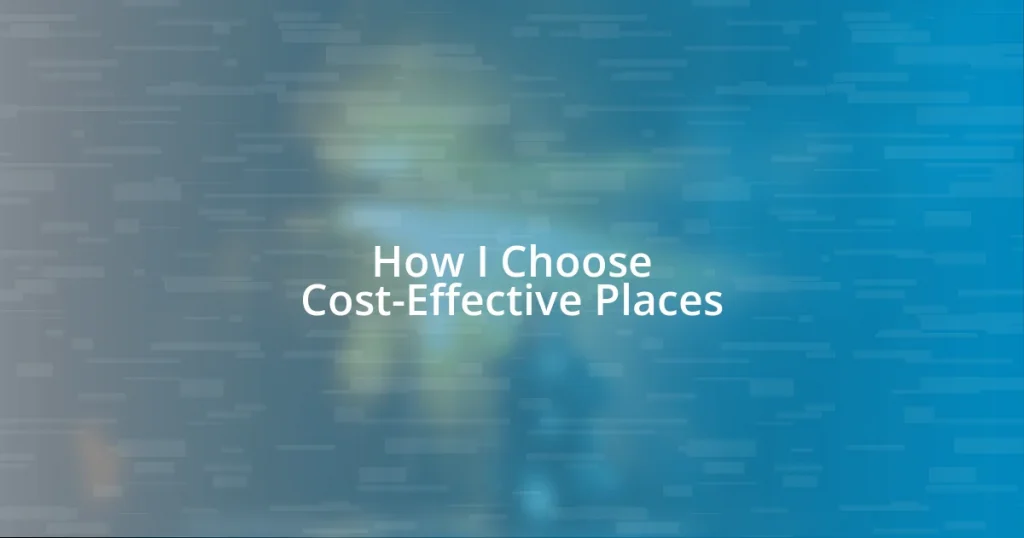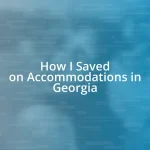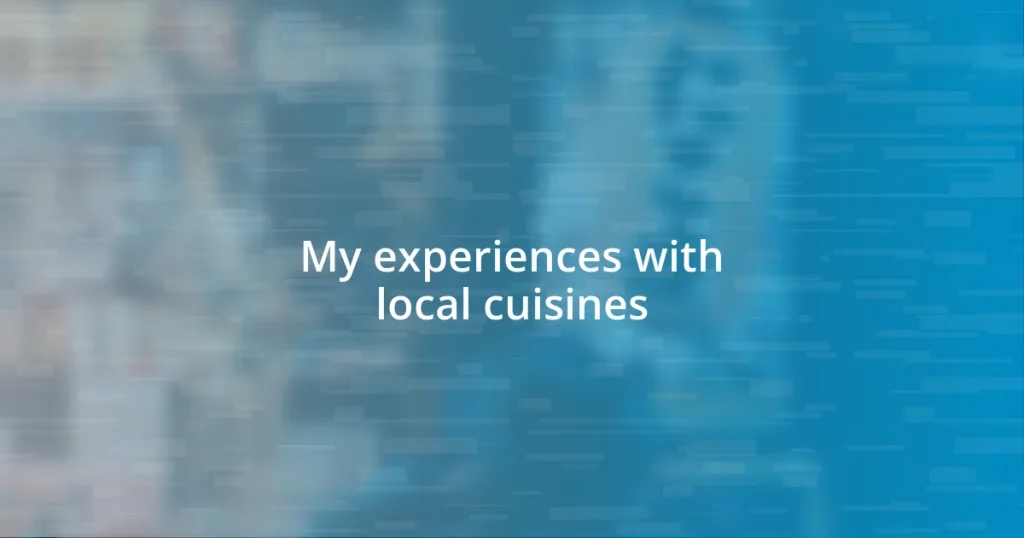Key takeaways:
- Cost-effective choices are about balancing price with value and personal experiences, not just opting for the cheapest options.
- Thorough research, including understanding local necessities and using online resources, is vital in identifying truly affordable locations.
- Consulting with current residents and creating a checklist can provide valuable insights and clarity for making informed decisions when choosing a place to live.
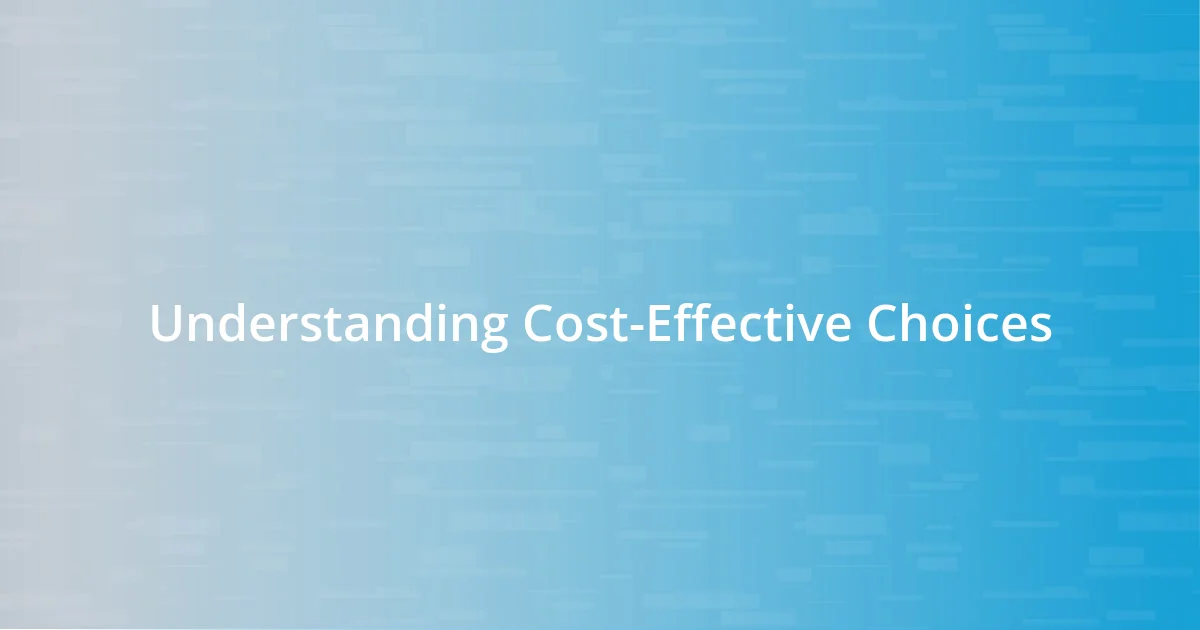
Understanding Cost-Effective Choices
When I think about cost-effective choices, it often begins with defining what “cost-effective” truly means for me. It’s not just about picking the cheapest option; it’s also about considering value for money. I remember a trip where I opted for a budget-friendly hotel instead of a luxury resort. Sure, I saved money, but the experience felt lacking in quality. Did I really save anything, or was I just trading comfort for a few extra dollars in my pocket?
One aspect that stands out in my journey of making cost-effective choices is the importance of research. I always take the time to compare options, weigh amenities, and read reviews. It’s fascinating how a little digging can uncover hidden gems that strike the perfect balance between quality and price. For instance, I once stumbled upon a charming local restaurant while avoiding tourist traps, which offered delicious meals at a fraction of the cost. I often find myself asking, “How much am I really willing to invest in an experience?”
Emotional connections also play a crucial role in my decision-making. When selecting cost-effective options, I look beyond monetary savings to how they align with my values and experiences. Choosing environmentally friendly products, even if they come at a slightly higher price, often feels worth it to me. There’s a sense of fulfillment in investing in choices that resonate with who I am and what I care about. How do you consider your values when budgeting? It’s a thought worth pondering as you navigate your own cost-effective journey.
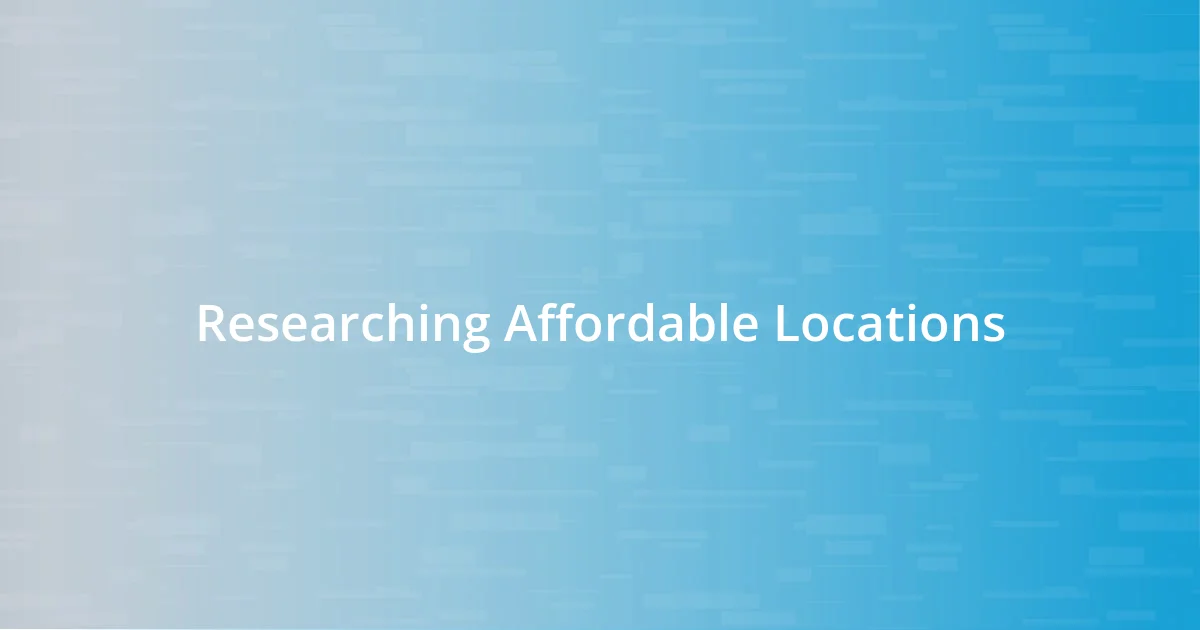
Researching Affordable Locations
Researching affordable locations can feel overwhelming at times, but I’ve discovered that focusing on specific aspects makes it easier. I love using online comparison tools to evaluate different places based on living costs, amenities, and even the local vibe. It’s like piecing together a puzzle that represents not just affordability but also the lifestyle I’m seeking. For example, while searching for a new city to move to, I found that a vibrant community in a less touristy area offered much more than just lower rent—it had friendly locals and a rich cultural scene.
One crucial element I always consider is the cost of everyday necessities. This includes not just housing but also groceries, transportation, and leisure activities. While searching for affordable places, I once skipped a city that seemed cheap on paper. However, upon closer inspection, the cost of living was driven up by overpriced groceries and utilities. This taught me to dig deeper because, in the end, affordability is not solely about rent.
Using social media is also a strategy I’ve embraced. Online communities often share invaluable experiences about affordable locations. I remember reading a post from someone who raved about an area where you could find great thrift stores and food markets. After a visit, I was hooked! It highlighted the fact that affordability is often linked to smart spending as much as it is to location itself.
| Criteria | City A | City B |
|---|---|---|
| Average Rent (1-BR) | $800 | $1,200 |
| Groceries (Monthly) | $250 | $350 |
| Public Transport | $70 | $100 |
| Leisure Activities | $150 | $200 |
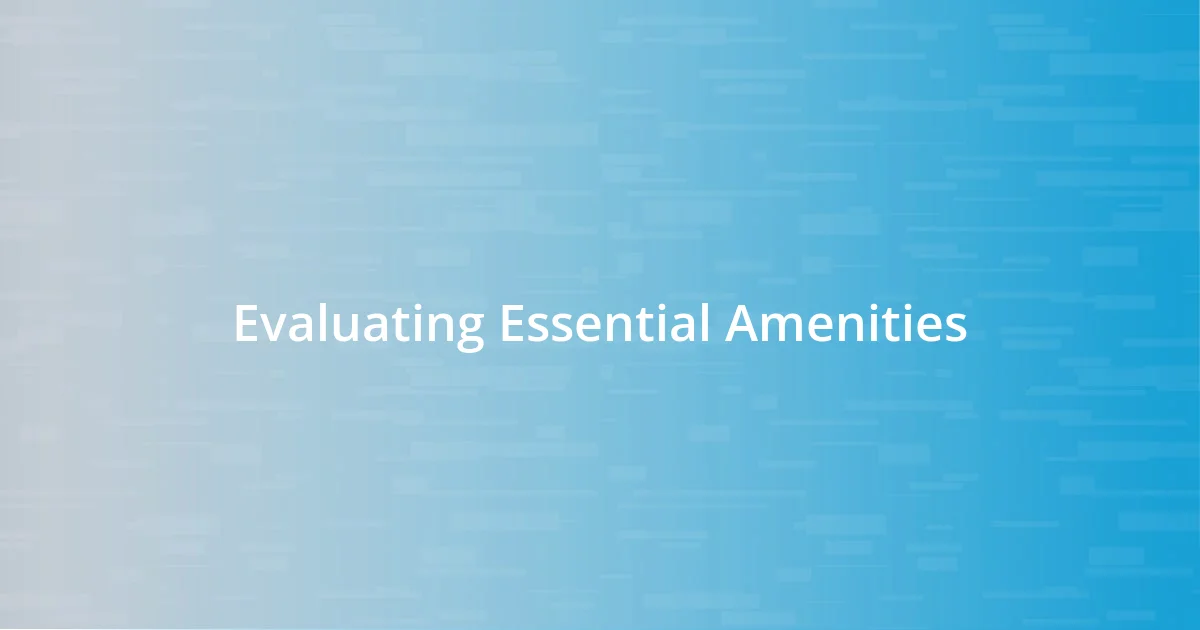
Evaluating Essential Amenities
Evaluating essential amenities is central to my cost-effective journey. I’ve learned that it’s not just about looking for the lowest price; it’s about understanding what amenities truly enhance my experience. I remember when I was searching for a new place to stay during a vacation. I overlooked a property that initially seemed more expensive because it offered free breakfast and shuttle services to local attractions. Those amenities ultimately saved me time and money, making my trip more enjoyable.
When assessing amenities, I often prioritize:
- Proximity to essential services: Grocery stores, hospitals, and public transport can greatly impact my daily life.
- Inclusivity of utilities: Knowing whether the rent includes utilities like water, electricity, and internet helps in my budgeting.
- Access to recreational areas: Parks, gyms, and community spaces contribute to a healthier lifestyle and can enhance my living experience.
- Safety features: Good lighting, secure entrances, and neighborhood safety ratings play a big part in my comfort and peace of mind.
It’s fascinating how small details can transform a good choice into a great one, and my experiences continually reinforce this idea. Each amenity I value melds together, shaping the environment I want to inhabit.
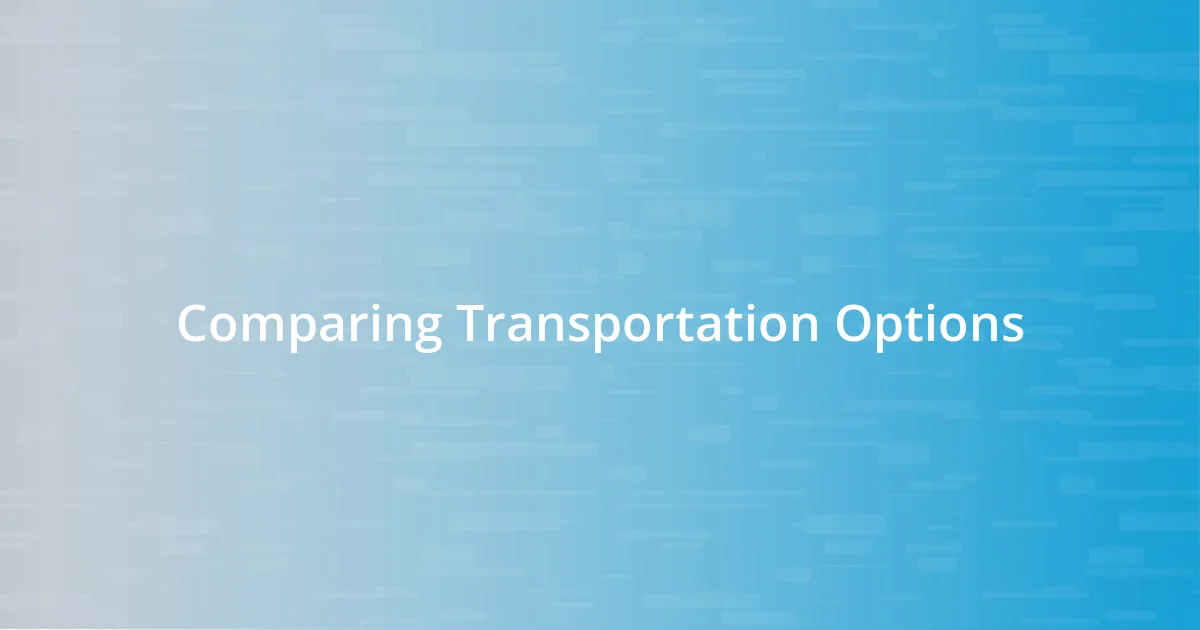
Comparing Transportation Options
When it comes to comparing transportation options, I often find myself weighing public transport against owning a car. Several years back, I chose to rely solely on public transportation while living in a city known for its efficient subway system. I quickly learned that it not only saved me money on gas and parking but also freed me from the stress of navigating traffic. Have you ever experienced the relaxation that comes with simply hopping on a train, knowing you can catch up on a book or listen to music? It’s a unique, rewarding experience.
However, public transport isn’t a one-size-fits-all solution. For instance, I once lived in a neighborhood where the nearest bus stop was over a mile away, making it feel inconvenient during inclement weather. I had to weigh the savings against the time and effort I’d spend commuting. That led me to explore ride-sharing options. On occasion, I’d use a service like Uber when I had an urgent meeting. The flexibility gave me peace of mind, although it added up financially. I realized that sometimes the most cost-effective choice includes balancing convenience with comprehensive costs.
Lastly, I think it’s essential to consider the overall transportation infrastructure of a place. I remember a trip to a city that had an excellent bike-sharing program. Renting a bike for just a few dollars was a smart, affordable way to explore. It made me appreciate the versatility of transportation options—whether you prefer the freedom of biking, the reliability of public transit, or the convenience of a car. What are your thoughts on navigating a new city? Understanding your own preferences can make all the difference in choosing the right transportation method that suits both your lifestyle and budget.
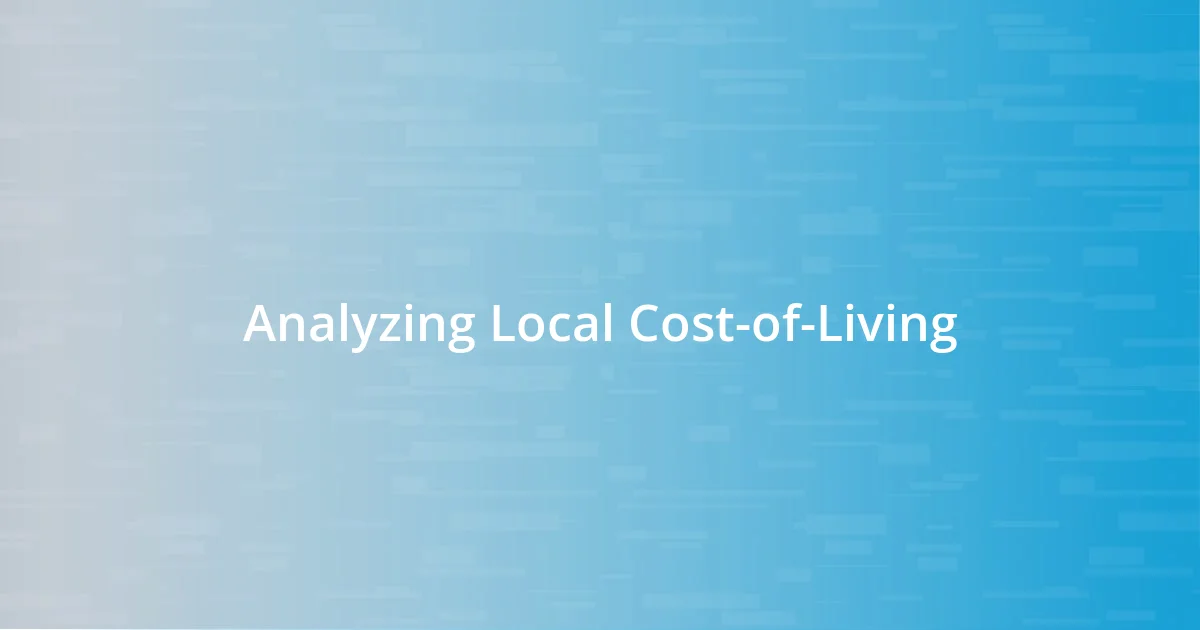
Analyzing Local Cost-of-Living
When I analyze the local cost of living, I focus on factors that really impact my day-to-day expenses. For example, I once moved to a city where the rent was slightly lower; however, I quickly discovered that groceries were significantly pricier than what I was used to. Have you ever faced that disconnect? It’s frustrating and can derail your budget plans if you’re not careful.
I also take a closer look at local taxes, which often slip under the radar during my research. In one instance, I relocated to an area with appealing housing prices but ended up paying a rather hefty property tax. It was an eye-opener! Understanding how taxes play into the overall cost of living can save considerable money in the long run.
Finally, the overall lifestyle—like dining out or entertainment costs—shapes my perception of a place’s affordability. I recall a vibrant locale full of trendy eateries, which was exciting initially. However, I soon realized that my dining expenses skyrocketed, forcing me to rethink my budget. It’s essential to align lifestyle expectations with financial realities. How do you balance your desires with practical financial decisions?
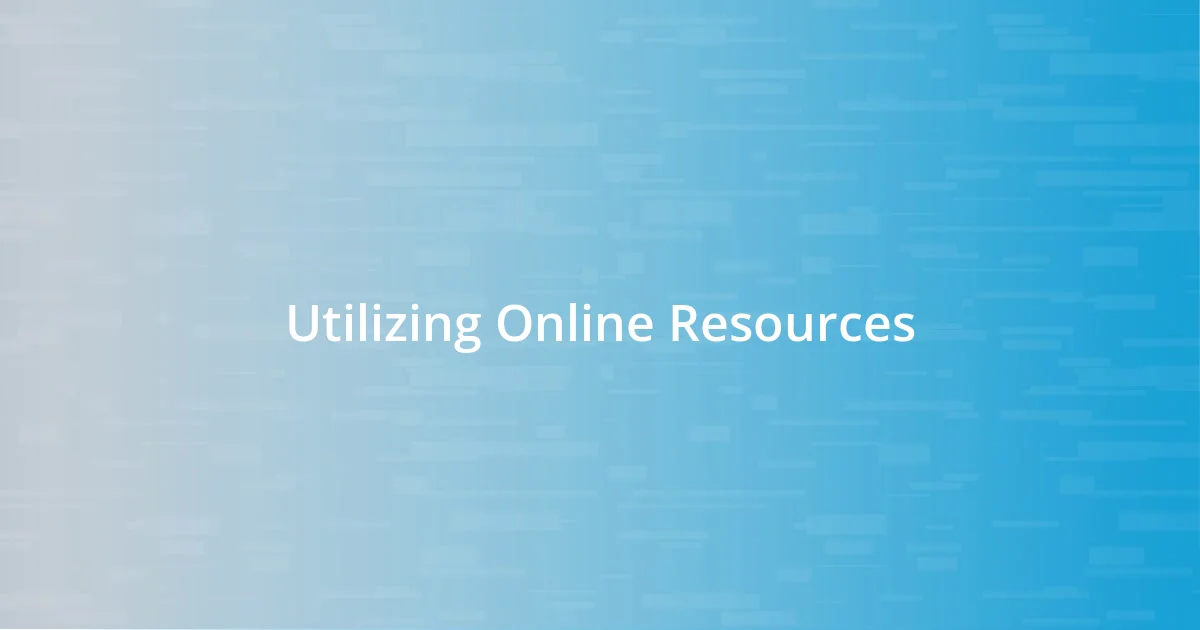
Utilizing Online Resources
Utilizing online resources has become an essential step in my quest for cost-effective places. I often start by diving into websites like Numbeo or Expatistan, where I can compare the cost of living across various cities. I vividly remember feeling overwhelmed when I first discovered how different grocery prices can be in alternate locations. It was a game-changer for me—gaining insight into where my hard-earned money would stretch further sparked a sense of control over my budgeting process.
I also make good use of social media platforms, where local groups and forums provide a wealth of firsthand information. I once stumbled across a Facebook group discussing inexpensive housing in a town I was eyeing. Members shared not only rental prices but also insider tips on hidden gems that wouldn’t break the bank. It felt exhilarating connecting with residents who offered genuine advice, making me feel a part of the community even before moving there. Have you ever tapped into such resources? It’s amazing how much wisdom is exchanged online.
Lastly, I find it incredibly helpful to check platforms for reviews and rankings, such as Yelp or TripAdvisor, especially when assessing quality versus cost. On a recent trip, I relied on these sites to find affordable dining spots. I was pleasantly surprised to discover a local diner where the fare was both delicious and delightfully cheap! The joy of indulging in a hearty meal while sticking to my budget is a reminder of how powerful informed choices can be. How do you leverage technology to make budget-friendly decisions?

Making Informed Final Decisions
When it comes to making informed final decisions, I always weigh the pros and cons carefully. I remember once deciding between two potential neighborhoods—both appealing in their own right. Ultimately, I spent a weekend in each area, absorbing the vibes and getting a feel for daily life. This hands-on approach allowed me to visualize where I could truly thrive financially and emotionally. Have you ever stepped back to really “live” a place before committing?
I also find it crucial to consult with current residents before making my move. In one instance, I spoke with a friend who had lived in a city I was considering. She shared her experience regarding hidden costs like maintenance fees in certain apartment complexes. That conversation was invaluable; it gave me insights that no website could provide, showing me that personal connections can guide informed decisions. Isn’t it interesting how often a simple chat can illuminate the bigger picture?
Finally, formalizing my decision with a checklist helps me solidify my choice. I jot down financial goals, lifestyle needs, and even emergency funds I might need. For example, while deciding to move to a more cost-effective locale, I listed out potential job markets aligned with my career. This method gives me clarity and allows me to visualize my future, making the leap a bit less daunting. How do you organize your thoughts when faced with significant choices?








